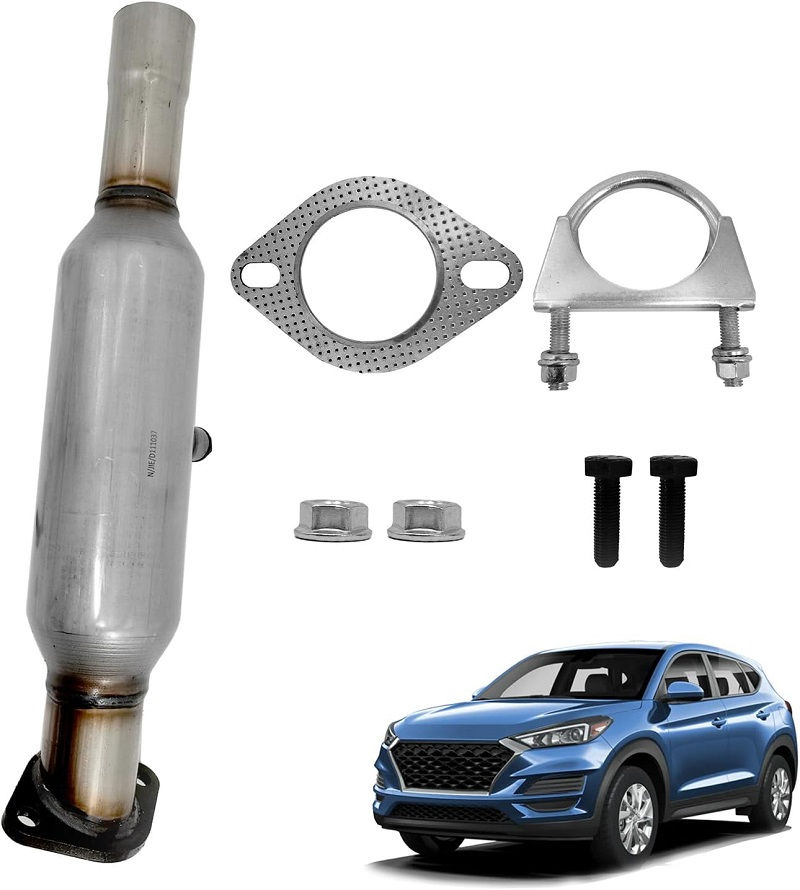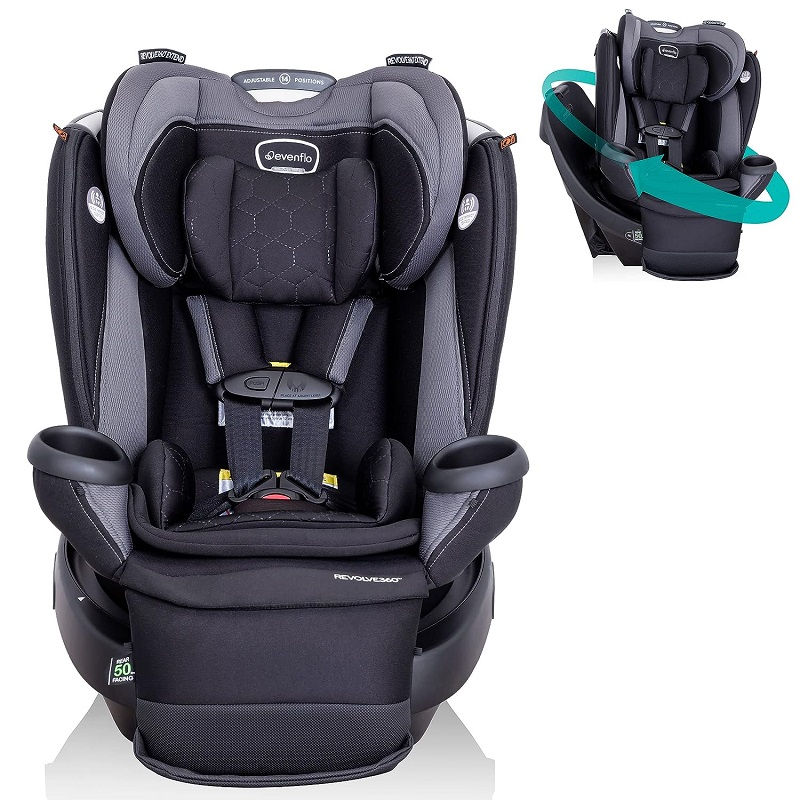This post contains affiliate links. This means I will make a commission at no extra cost to you should you click through and make a purchase [ “As an Amazon Associate, I earn from qualifying purchases.” ]. Read the full disclosure here.
Hyundai Tucson Catalytic Converter GuideMechanic.Com When it comes to the performance and emissions of your Hyundai Tucson, the catalytic converter plays a crucial role.
This vital component helps reduce harmful pollutants, ensuring your vehicle meets environmental standards and operates efficiently.
In this comprehensive guide, we will explore everything you need to know about the Hyundai Tucson catalytic converter, from its function and importance to common issues and maintenance tips.
Understanding the Catalytic Converter

The catalytic converter is an integral part of your Hyundai Tucson’s exhaust system. It is a device designed to reduce harmful emissions produced by the engine.
The catalytic converter contains a combination of precious metals, such as platinum, palladium, and rhodium, which act as catalysts to facilitate chemical reactions.
See Also: Hyundai Catalytic Converter
When the exhaust gases pass through the catalytic converter, the precious metals trigger a series of chemical reactions that convert harmful pollutants, such as carbon monoxide, nitrogen oxides, and unburned hydrocarbons, into less harmful substances like carbon dioxide, nitrogen, and water vapor. This process helps minimize the impact of vehicle emissions on the environment.
The Purpose of a Catalytic Converter
The primary purpose of the catalytic converter is to reduce the level of harmful pollutants emitted by the vehicle’s engine.
By converting these pollutants into less harmful substances, the catalytic converter helps improve air quality and minimize the negative impact of vehicle emissions on human health and the environment.
In addition to reducing emissions, the catalytic converter also plays a crucial role in maintaining the overall performance and efficiency of your Hyundai Tucson.
It helps ensure the proper combustion of fuel, optimizing engine performance and fuel economy. Without a functioning catalytic converter, your vehicle may experience decreased power, reduced fuel efficiency, and even engine misfires.
The Role of Oxygen Sensors
Oxygen sensors, also known as O2 sensors, work in conjunction with the catalytic converter to ensure optimal performance.
These sensors monitor the amount of oxygen in the exhaust gases and provide feedback to the engine control unit (ECU).
The ECU uses this information to adjust the air-fuel mixture, ensuring efficient combustion and proper functioning of the catalytic converter.
If an oxygen sensor detects an imbalance in the air-fuel mixture, it will send a signal to the ECU, which may then adjust the fuel injection or ignition timing to achieve the desired ratio.
This continuous feedback loop between the oxygen sensors, ECU, and catalytic converter helps maintain optimal engine performance and emission control.
Importance of a Well-Functioning Catalytic Converter
Check out this Evenflo Revolve360 Extend All-in-One Rotational Car Seat with Quick Clean Cover (Revere Gray)
A well-functioning catalytic converter is of utmost importance for several reasons. Firstly, it helps reduce the emission of harmful pollutants into the atmosphere, contributing to cleaner air and better overall environmental health.
By converting carbon monoxide into carbon dioxide, nitrogen oxides into nitrogen, and unburned hydrocarbons into water vapor, the catalytic converter helps minimize the negative impact of vehicle emissions on climate change and air quality.
Secondly, a properly functioning catalytic converter ensures compliance with environmental regulations and emission standards.
In many regions, vehicles are required to pass emissions tests periodically to ensure they meet the prescribed emission limits.
A faulty or inefficient catalytic converter can cause a vehicle to fail these tests, leading to legal penalties, fines, or even restrictions on vehicle usage.
Benefits for Vehicle Performance
Aside from its environmental significance, a well-maintained catalytic converter also contributes to the overall performance and efficiency of your Hyundai Tucson.
See Also: Hyundai Santa FE Catalytic Converter
By effectively converting harmful pollutants, the catalytic converter allows the engine to operate at its optimal level, ensuring smooth acceleration, improved power delivery, and enhanced fuel efficiency.
Furthermore, a faulty catalytic converter can disrupt the engine’s combustion process, leading to misfires and decreased performance.
It can also trigger the check engine light, indicating potential issues that need attention. Maintaining a healthy catalytic converter will help you avoid these performance-related problems and ensure a pleasant driving experience.
Signs of a Failing Catalytic Converter
Recognizing the signs of a failing catalytic converter is crucial for timely diagnosis and prevention of further damage.
Here are some common symptoms that may indicate a potential issue with your Hyundai Tucson’s catalytic converter:
1. Check Engine Light
A illuminated check engine light can be an early indication of a problem with the catalytic converter. The onboard diagnostic (OBD) system of your vehicle is designed to monitor the performance of various components, including the catalytic converter.
If the OBD system detects inefficiencies or abnormal readings from the oxygen sensors or other related components, it may trigger the check engine light.
It’s important not to ignore the check engine light, as it could indicate various issues, including a failing catalytic converter. Have your vehicle diagnosed by a qualified technician to identify the exact cause of the warning light.
2. Reduced Engine Performance
A failing catalytic converter can lead to reduced engine performance. You may notice a decrease in power, sluggish acceleration, or difficulty maintaining high speeds.
This can be attributed to the increased backpressure caused by a clogged or inefficient catalytic converter, which restricts the flow of exhaust gases and hampers the engine’s ability to breathe properly.
If you experience a noticeable decline in performance, it’s advisable to have your catalytic converter inspected to determine if it needs repair or replacement.
3. Rattling Noises
Unusual rattling noises coming from underneath your vehicle may indicate a loose or damaged catalytic converter.
Over time, the internal components of the catalytic converter can deteriorate, leading to internal rattling or a metallic sound.
This is often a sign that the catalyst substrate or other internal elements have broken down, requiring immediate attention.
Ignoring rattling noises can lead to further damage or even complete failure of the catalytic converter. If you notice any unusual sounds, it’s best to have your vehicle inspected by a professional mechanic.
4. Foul Odors
A malfunctioning catalytic converter can emit foul odors, such as a strong sulfur smell, from the exhaust. This odor is typically a result of incomplete combustion and the presence of excessive sulfur compounds in the exhaust gases.
See Also: Hyundai Elantra Warning Lights
It’s important to note that other engine-related issues can also cause foul odors, so it’s essential to have a thorough inspection to accurately diagnose the problem.
5. Decreased Fuel Efficiency
If you notice a sudden decrease in fuel efficiency, it could be a sign of a failing catalytic converter. A clogged or inefficient catalytic converter can disrupt the combustion process, leading to increased fuel consumption.
The engine may require more fuel to compensate for the restricted exhaust flow, resulting in decreased mileage per gallon.
If you observe a significant drop in fuel efficiency without any other apparent reasons, it’s recommended to have your catalytic converter inspected.
6. Failed Emissions Test
If your Hyundai Tucson fails an emissions test, it could indicate a malfunctioning catalytic converter. During an emissions test, exhaust gases are analyzed to ensure they meet the prescribed emission limits.
A faulty catalytic converter may not effectively convert pollutants, causing the emission readings to exceed the permissible levels.
If your vehicle fails an emissions test, it’s crucial to have the catalytic converter inspected and repaired or replaced to bring your vehicle back into compliance.
7. Overheating
A failing catalytic converter can cause excessive heat buildup in the exhaust system. Over time, this can lead to overheating of the catalytic converter itself or other nearby components.
An overheating catalytic converter may emit a burning smell and can potentially cause damage to the surrounding parts, including the exhaust manifold or oxygen sensors.
If you notice any signs of overheating, such as unusual smells or increased temperature readings on the dashboard, it’s essential to have your vehicle inspected promptly.
8. Visible Damage
In some cases, a failing catalytic converter may exhibit visible signs of damage. This can include cracks, dents, or even a melted appearance.
Physical damage can occur due to various factors, such as road debris, improper installation, or extreme heat generated by the engine.
If you notice any physical damage to your catalytic converter, it’s crucial to have it inspected and repaired or replaced as necessary.
Addressing Catalytic Converter Issues
If you experience any of these symptoms or suspect a problem with your Hyundai Tucson’s catalytic converter, it’s important to address the issue promptly.
See Also: P0441 Hyundai Veloster: Diagnosis And Repair
Continuing to drive with a faulty catalytic converter not only compromises your vehicle’s performance but also contributes to increased emissions, potentially harming the environment.
The first step is to have your vehicle diagnosed by a qualified mechanic or technician. They will perform a thorough inspection, including checking for error codes, conducting emission tests, and visually inspecting the catalytic converter for any visible damage or clogging.
Based on the diagnosis, they will recommend the appropriate course of action, which may include repair or replacement of the catalytic converter.
Frequently Asked Questions
Here are answers to some frequently asked questions related to Hyundai Tucson catalytic converters:
1. Are catalytic converters covered under warranty?
Catalytic converters are typically covered under the vehicle’s emissions warranty, which can vary depending on the manufacturer and region.
It’s recommended to review your Hyundai Tucson’s warranty terms and consult with the dealership or manufacturer to understand the coverage for catalytic converters.
2. Can I install a used catalytic converter?
While it’s possible to install a used catalytic converter, it’s generally not recommended. Used converters may have limited lifespan remaining or be incompatible with your vehicle.
Additionally, some regions have regulations prohibiting the installation of used catalytic converters. It’s best to opt for a new or high-quality aftermarket catalytic converter to ensure optimal performance and compliance.
3. Can I clean a clogged catalytic converter?
In some cases, a clogged catalytic converter can be cleaned to restore its functionality. However, cleaning methods vary depending on the type of clog and the converter’s condition.
It’s recommended to consult with a professional technician or exhaust specialist who can assess the severity of the clog and determine the most appropriate cleaning method.
4. Can I drive with a faulty catalytic converter?
Driving with a faulty catalytic converter is not recommended. A malfunctioning converter can lead to decreased performance, increased emissions, and potential damage to other engine components.
Furthermore, it may cause your vehicle to fail emissions tests, leading to legal consequences. It’s best to address any issues with your catalytic converter promptly to ensure optimal performance and compliance with regulations.
5. Can I remove the catalytic converter for better performance?
Removing the catalytic converter is illegal in many regions and can result in severe penalties. Apart from the legal implications, removing the catalytic converter is not recommended as it will significantly increase emissions, harm the environment, and may negatively impact your vehicle’s performance and fuel efficiency.
It’s best to explore legal alternatives, such as upgrading to a high-performance catalytic converter, to achieve your desired performance goals.
Conclusion
The catalytic converter is a critical component of your Hyundai Tucson, playing a vital role in reducing emissions and maintaining performance.
Understanding its function, importance, and proper maintenance is essential for ensuring a smooth and eco-friendly driving experience.
By recognizing the signs of a failing catalytic converter, addressing issues promptly, and following expert advice, you can optimize the performance and longevity of your catalytic converter.
Remember to comply with local emissions regulations, consider legal alternatives for enhancing performance, and consult with professionals when needed.
See Also: P0441 Hyundai Tucson: What Causes P0441
With proper care and attention, your Hyundai Tucson’s catalytic converter will continue to contribute to cleaner air, improved performance, and a greener future.
- P007F 62 Code Range Rover - June 10, 2024
- P007F Ford Focus: Causes, Diagnosis, and Solutions - June 5, 2024
- P0080 Ford: Causes, Diagnosis, and Solutions - May 31, 2024


